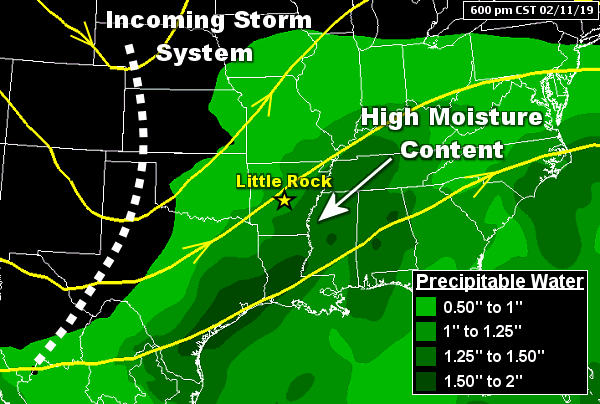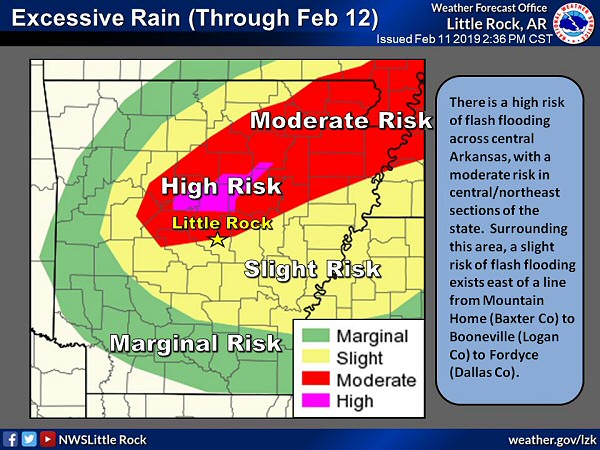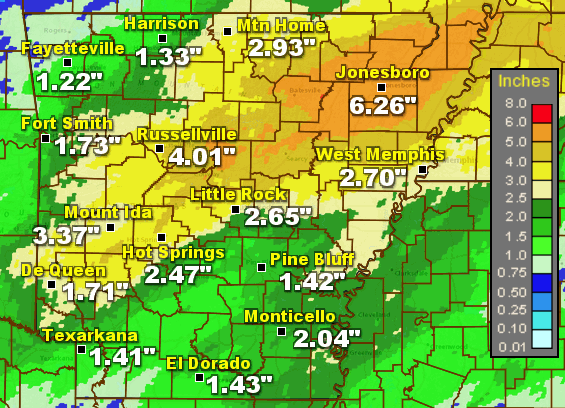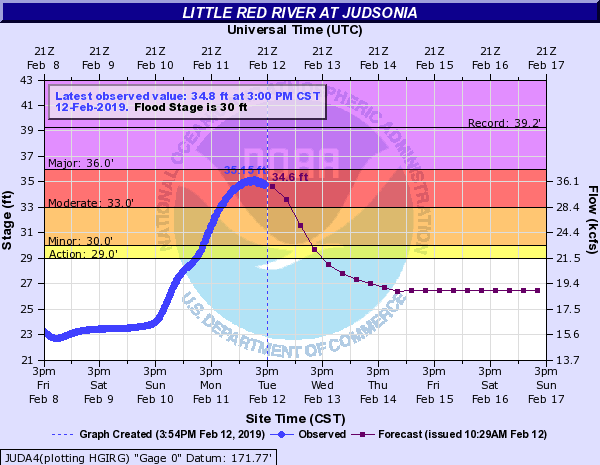|
Drone footage from Judsonia (White County) showed the impacts of the overflowing river. It looked more like a lake than a river in places, with roads inundated with water and barricaded in some cases.
Swollen rivers closed highways in the northeast, including Highway 37 between Cord (Independence County) and Tuckerman (Jackson County), Highway 14 between Oil Trough (Independence County) and Newport (Jackson County), Highway 37 near Grubbs (Jackson County), Highway 25 between Black Rock and Powhattan (both in Lawrence County), and Highway 166 northeast of Pocahontas (Randolph County).
There were numerous reports of flash flooding. At least two vehicles were swept off the pavement by rapidly rising creeks. The vehicles were just east of Springfield (Conway County) near Cadron Creek, and west of Hagarville (Johnson County) at the intersection of Highways 123 and 292 close to Minnow Creek. No injuries were reported in either incident.
On the 22nd, a 76-year-old man drove
through high water along Highway 37 along
the Black River. He went around at least
four barricades to attempt to make a
delivery in Batesville (Independence
County). His body was discovered the next
morning.
|



